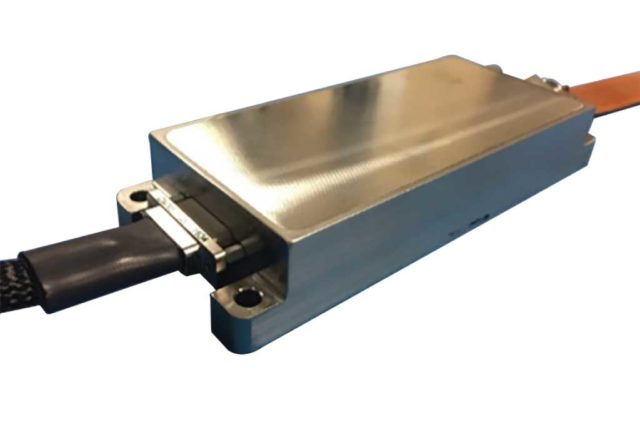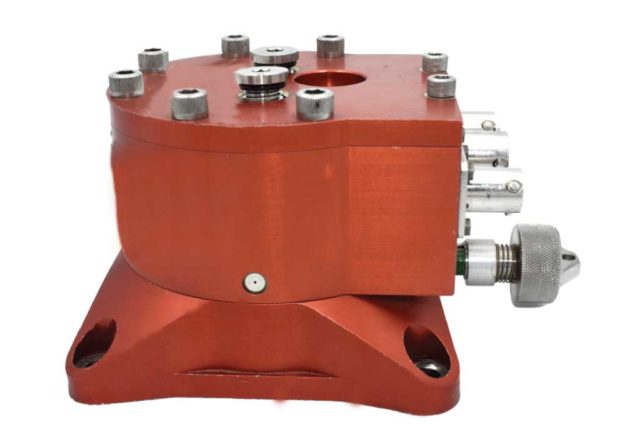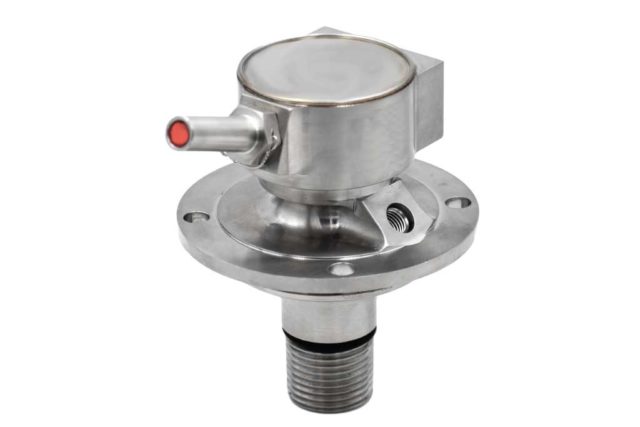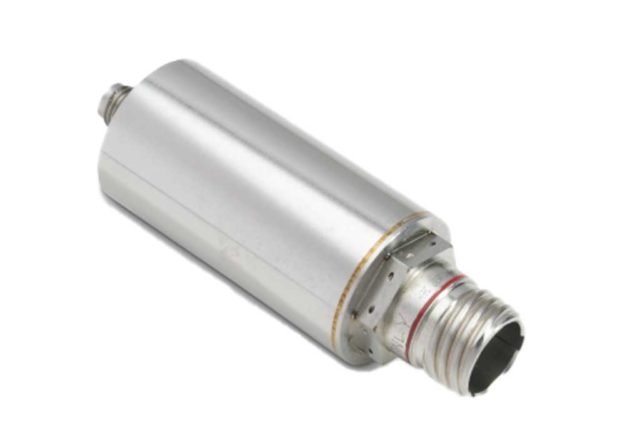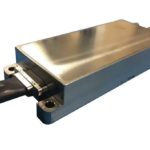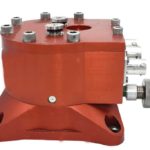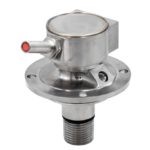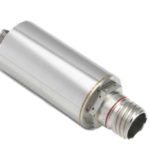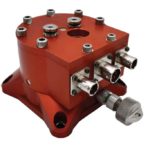Safe and Arm Devices
Product Description
50 Years of Experience
A Safe and Arm Device (SAD) prevents any main charge explosive (military, oil and gas, or space vehicles) from accidental initiation prior to arming, while at the same time allowing the intended explosive train to detonate once it has been armed. Basically a safe arm device controls the initiation of a pyrotechnic train such that the energetic output is fired only when commanded and is safe at all other times. It’s a device that prevents inadvertent arming or firing of a pyrotechnic event and makes the system is insensitive to environmental stimulus, such as fires, electro-magnetic fields, stray voltages and electro-static discharge
Pacific Scientific Energetic Materials Company (PacSci EMC) has over fifty years of experience providing highly reliable ordnance components and systems for space launch vehicles, missiles, tactical weapons, and aircraft, and is well known in the aerospace and defense industry as the leading supplier of Safe and Arm (S&sA) along with Arm-Fire Devices (AFD). S&A/AFDs are safety devices that provide electrical and mechanical interruption to prevent unintended functioning of an ignition train, predominantly in either a Flight Termination System (FTS) or Rocket Motor Ignition (RMI) System.
The terms S&A and AFD have been used interchangeably throughout history, but most commonly refer to the product’s end use. S&A devices are typically used by the Space Launch industry in Flight Termination Systems and in Solid Rocket Booster Ignition Systems. AFDs are typically used in Missile Systems for Rocket Motor Ignition. Both products act to protect the system and associated personnel from accidental Rocket Motor Ignition or Flight Termination System activation. There are some exceptions to this “rule”, primarily for missiles that require flight termination systems, e.g. during the missile’s development testing phase. Accordingly, there are several S&A configurations that appear more like traditional AFDs in design. PacSci EMC has been producing S&As and AFDs for over fifty years. The list of programs is extensive, with table below providing a sample of programs having extensive technical requirements and long term production. Many programs use multiple PacSci EMC S&A/AFD devices on the same platform.
A variety of PacSci EMC programs using Safe and Arm along with Arm Fire Devices

Our Safe and Arm Devices
- Arm Fire Device
- Electronic Safe & Arm Device
- Electronic Ignition Safety Device
- Electro-mechanical Safe & Arm Device
- Ordnance Safe & Arm Device
In the beginning…
In 1992, the Eastern Test Range advised the space launch community that imposition of EWR-127 would be mandatory for future spacecraft launch vehicles. Prior to that directive, each launch vehicle and contractor utilized a broad variety of different Safe and Arm Devices for Flight Termination and Ignition. These devices were from a variety of sources, varied widely in their designs, and did not comply with EWR-127.
The Atlas program made a decision to solicit a new S&A that would not only be EWR-127 compliant, but would also withstand increasingly severe environments of higher performance launch vehicles and provide a substantial cost reduction over existing S&A devices.
We presented a design and was selected after a competitive selection process. This design was based on a balanced single rotor design that met all of the Atlas criteria. Our design, aka, “The Red S&A Family”, was subsequently issued U.S. Patent 5,279,226 in 1994.
A generic design of the original Atlas S&A, shown in Figures 1 and 2, easily accommodated minor electrical circuit variations, mounting, safing key orientation, and other features. The Atlas unit was fully qualified for a Flight Termination System and Solid Rocket Motor Ignition to the requirements of MIL-STD-1576 and EWR 127.
Once the initial qualification program was approved, several other programs and customers adopted the PacSci EMC S&A design. Since its inception, this original qualified design, has been re-qualified and flown on almost all U.S. space launch vehicles. The list of customers and programs includes, Boeing’s Delta launch vehicles, Orbital Sciences Corporation’s Pegasus and Taurus launch vehicles, Lockheed’s Titan and Atlas launch vehicles, and Northrop’s SLS program in the near future.
To date, the Red S&A family is qualified to RCC 319-07T, adding to its extensive pedigree in both margin testing and qualification. We are extremely familiar with RCC 319 and the Range
Safety process through our delivery of over 1,500 S&As to meet the RCC 319-92, 99, and 07 requirements over the past 15 plus years on the following programs: SSST Coyote, Stormbraker,
JASSM, JASSM-ER and Targets and Countermeasures Program. Both Eastern and Western test ranges and the Aerospace Corporation have been involved in the evolution and details of the design. To date, we deliver approximately 200 S&As annually.
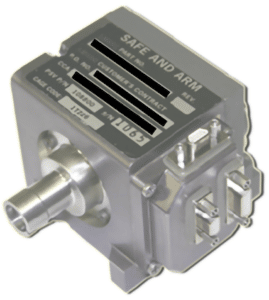
In 2002, Lockheed Martin approached us to provide a lighter weight and smaller size S&A. We originally qualified P/N 108800 S&A to support a Lockheed program in 2005 that met RCC 319-99 requirements with a subsequent delta-qualification series to RCC 319-07 in 2009. That design incorporated the pedigree of the Red S&A family in a smaller package.
Its all about decisions
Are the mission requirements clearly defined? Is redundancy a must? Visual or electrical monitoring? Permanent assembly or need to disassemble? Minimum Performance vs Operational vs Margin inputs? What about minimum Reliability? Since the initial days of S&A/AFD qualification, the complexity of mission needs and test requirements have grown significantly. As such, the initial assessment and selection can be overwhelming. Although most of the criteria will be mission dependent, the simplest method is to narrow the search by defining
the application industry, as shown in Table 2. Once the typical industry qualification requirements The right design for your application
Determining the type of S&A/AFD design to choose is directly dependent on intended use. Typical applications include Rocket Motor Ignition or Flight Termination. Occasionally, a variant S&A known as an Interrupter 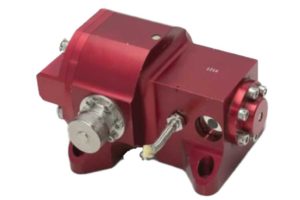
If a customized solution is required, our New Product Development team can manage the full development cycle from Concept Design to Qualification, providing a seamless transition to continuous production.
Key Features
What are Safe and Arm Devices?
Simply stated, an in-line Safe and Arm Device (SAD) is a high voltage safe arm device. It consists of:
- Safety Input inhibit signals
- Safety logic circuity
- Pyrotechnic output, which can be either
- Deflagrating (burn and create heat and pressure)
- Detonating (produce shock output)
Because SADs can use either type of output, they can initiate a wide variety of pyrotechnic events. There are some options around deflagrating and detonating and also some overlap between the two. It’s possible to change from deflagrating to detonating or transfer vice versa.
Safe and arms can be used for rocket motor ignition to initiate cable cutters, separation nuts, or any kind of pressure actuated cartridge. They can also be used to start exploding transfer lines or fire into bulk destruct charges and expanding tubes, and this wide variety of pyrotechnic events is possible because of the different variety of outputs.
Most events don’t need a SAD, but there are four safety critical areas that drive our customers to need a Safe and Arm Device. If the requirement doesn’t fall into one of these four categories:
- Rocket Motor Ignition
- Hand Emplaced Ordnance/Vehicle Active Protection Systems
- Warhead Fuzing
- Flight Termination
An example not requiring a SAD would be the stage separation on a multi-stage vehicle. There are occasionally other fringe areas that could requires SADs.
A weapon or launch system that does require a safe and arm relating to the four areas is almost always going to include the involvement of one of the related safety groups which control these types of devices. Such as each weapons test range in the U.S., each with its own range safety group, which would approve the use of Flight Termination System (FTS) safe and arm device. Some additional examples are
- 30th space wing at Vandenberg Air Force Base
- 45th space wing for the eastern ranges
There are also dedicated groups based on technology, rather than location based groups mentioned above, which include:
- Ignitions System Safety Review Board (ISSRB) approve designs for Ignition Safety Devices (ISD) and other safe and arms
- Fuze and Initiation System Technical Review Panel (FISTRP)(ISD Fuzes)
- Weapon System Explosives Safety Review Board (WSESRB) (Munitions and Fuzes
- Army Fuze Safety Review Board (AFSRB)
- Air Force Nonnuclear Munitions Safety Board (NNMSB)
Each one of these panels controls a different device on a different platform in a different area. The devices we discuss here are relevant to these safety boards.
Let’s start with defining what a SAD is: A device whose purpose is to control the initiation of a pyrotechnic device such that the energetic output is fired only when commanded and is safe at all other times. It’s a device that prevents inadvertent arming or firing of a pyrotechnic event and makes the system is insensitive to environmental stimulus, such as
- Fires
- Electro-magnetic fields
- Stray voltages
- Electro-static discharge
SADs are required any time there is a risk to personnel or infrastructure if a pyrotechnic sub-system were to malfunction. These requirements exist because of several key disasters in the past. One such example is the USS Forrestal aircraft carrier fire in 1967. A fire in which a rocket inadvertently launched, causing a fire which then ignited other munitions onboard. That disaster resulted in the deaths of 134 sailors and crippling of the ship. These older weapon systems at the time did not use safe and arms. Most used simple hot wire devices, squibs or bridgewires.
Today, PacSci EMC SADs exist in many systems including:
- Commercial and defense aircraft
- Commercial and defense launch vehicles
- Tactical and strategic missiles
- Variety of munitions
- Vehicle active protection systems
To learn more about design principles of safe arm device, view this article from the Naval Air Warfare Center.
Applications
100,000+ Safe and Arm Type Safety Devices of Various Configurations
- Over the past 3 decades we have supported over 48 program platforms
- Simultaneously fired
- Used in the Space Launch Vehicle for Flight Termination Systems (FTS), Solid Rocket Booster (SRB) ignition systems, ignition stage separation and 2nd stage engine ignition
- Used in Tactical and Strategic Missile Platforms for FTS
Our Missile control safety and arming product line is suitable for application in all weapon system types including missiles, bombs, sea mines, torpedoes and Explosive Ordnance Disposal Systems. Also, our SAD and AFD product line contains designs that are MIL-STD-1901A and RCC-319 compliant across the technologies that we offer. Our long history and experience is demonstrated from our collaborative working relationship with the multitude of government safety boards. Our reliable SAD and AFD product line includes the following technology basis.
Our SAD and AFD product lines contain designs that are MIL-STD-1901A and RCC-319 compliant across the technologies that we offer. Our long history and experience is demonstrated from our collaborative working relationship with the multitude of government safety boards.
Specifications
Typical Safe & Arm/Arm Fire Device Qualification Requirements by Industry
Aerospace
AIAA S-113A
Military/Defense
MIL-HDBK-83578JOTP-052
RCC 319
Commercial
None or Tailored AIAA 113A
Tailored Rcc 319
Red S&A Family
All-Fire
Minimum 3.5 AMP (5.0 AMP recommended for 20 milliseconds
No-Fire
1 Amp/1 Watt for 5 minutes
Operating Temperature
-54 F to +74 F
Arming/Safing Votage
22 to 35 VDC
Output
Detonation
Insulation Resistance
500 M at 500VDC
Electronic Discharge Immunity
25 KV/500 pf/5 K
Pre-function Leak Specification
5 x 10-5 standard cc/second of Helium
Applicable Specifications
Detonator qualified to MIL-STD 1576 and MIL-STD 454
Meets requirements of MILSTD464 (EMI)
Designs compliant to RCC-319
Arm-Fire Devices
All-Fire
Minimum 3.5 AMP (5.0 AMP recommended for 20 milliseconds
No-Fire
1 Amp/1 Watt for 5 minutes
Operating Temperature
-54 F to +71 F
Arming/Safing Votage
28 VDC
Output
Deflagration – Tailored peak output pressure performance in 100 cc closed bomb
Insulation Resistance
100 M at 500VDC
Electronic Discharge Immunity
25 KV/500 pf/5 K
Pre-function Leak Specification
1 x 10-4 standard cc/second of Helium
Applicable Specifications
Detonator qualified to MIL-I-23659C
Compliant with MIL-STD-1901
Meets requirements of MILSTD-464 (EMI) & MIL-STD-1385 (HERO)
Interface
Red S&A Family Dimensions [Typical]
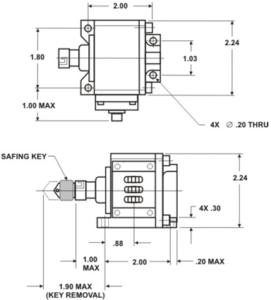
Envelope Drawing (Inch): Safe and Arm Device PN: 106679-11. Another common P/N is 107325-10.
FAQ's
-
What is a safe arm device?
A safe arm device is meant to prevent a main charge in an explosive train from inadvertently detonating while also allowing for detonation when the main charge is intended to detonate.
